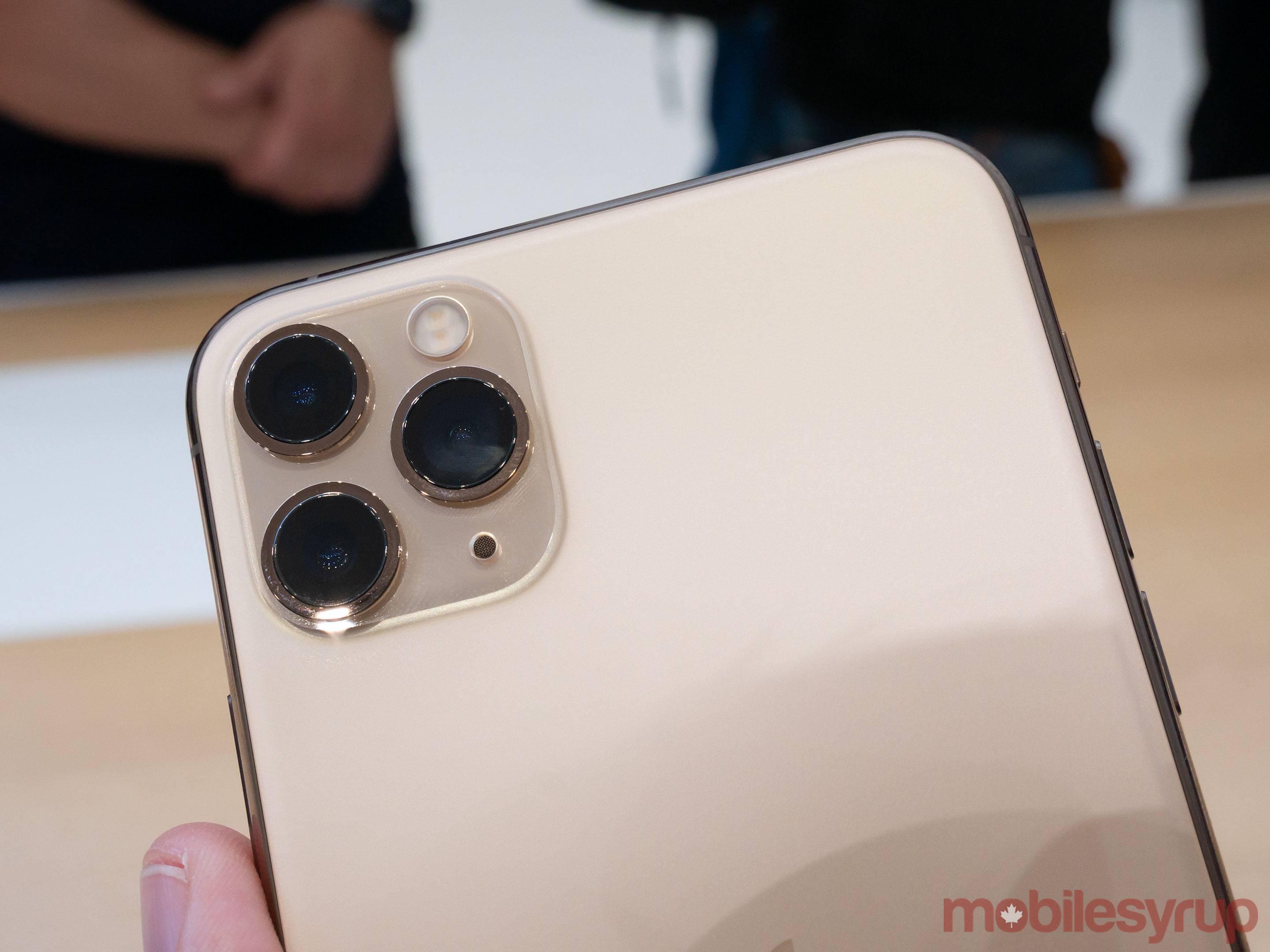Apple seems to be aiming to regain its smartphone camera crown with the just-announced iPhone 11 Pro and iPhone 11 Pro Max.
While the tech giant was once the dominant force in the smartphone camera space, it has since been eclipsed by rival devices from Samsung, Google and Huawei.
While I definitely need to spend more time with both the iPhone 11 Pro and 11 Pro Max’s new camera features, it seems that could soon change.
Camera upgrades

At the outset, the upgrade to last year’s iPhone XS and XS Max is largely expected and incremental. That said, a few of the Pro’s new features, particularly in the camera department, could be exactly what Apple needs to catch up to competitors like Samsung and Huawei.
For example, there’s now a third rear-facing, wide-angle shooter with a 120-degree field-of-view, a feature we’ve seen in devices from smartphone manufacturers like Samsung and Huawei for a few years now.
When using this feature, you’ll quickly notice that your field-of-view extends beyond the camera’s on-screen controls, indicating that the phone is capable of seeing more than what you currently can.
Focusing is snappier than with the XS series, switching between cameras remains smooth and a new slow-motion video mode with the 12-megapixel front-facing shooter has been added to the phones as well. The cameras can also combine forces to offer a total 4x optical zoom range, which will come in handy when trying to grab shots from further away and also closer up. It’s worth noting that the telephoto camera still offers only a 2x optical zoom over the regular 12-megapixel shooter.
Further, there’s finally a new ‘Night Mode’ that Apple placed significant emphasis on during its keynote. I, unfortunately, didn’t get a chance to test this feature out but on paper, it seems as capable as the Pixel’s ‘Night Sight’ feature.
In general, the iPhone Pro and Pro Max’s camera experience seems significantly improved, but further testing is still required.
Slippery no more
The look of Apple’s flagship iPhones has changed slightly as well — mostly for the better. There’s a new matte finish on the rear of the phone that looks like it will finally solve the grease and dust issues that plague pretty much every modern flagship smartphone.
As an added bonus, the new matte rear also makes the iPhone 11 Pro less slippery, which should, in theory, result in less accidental drops. This gives the phone a more premium feel and while it might sound silly, is probably one of my favourite changes to the iPhone’s design in the last few years.
Then there’s the new sizable, three-lens camera bump. There’s no getting around the fact that it’s big and that it does look offputting at first. Similar to how the iPhone X’s vertical camera bump was initially a little jarring, I think I’ll likely get used to it in time.
There’s also the argument that everyone puts their phone in a case anyway (if you don’t, you should), though for such an expensive device, the iPhone 11 Pro should look great regardless.
Processor power overkill
Other expected improvements have also been added to the 5.8-inch Pro and 6.5-inch Pro Max, including Apple’s new A13 Bionic processor. While the A12 already had a sizable lead on Qualcomm’s Snapdragon 855 in terms of raw power, Apple claims the A13 is even faster.
The new processor is focused on machine learning and battery life, with Apple claiming that the 11 Pro and Pro Max’s batteries should last four and five more hours than the iPhone XS and XS Max respectively. Though I didn’t get to put the phone through its paces, it felt about as snappy as the iPhone XS in my experience.
The iPhone 11 Pro and 11 Pro Max’s display looked stunning during my brief time with the phone, but also nearly identical to last year’s screen featured in the iPhone XS and iPhone XS Max. Colours are bright and saturated without pushing the look as far as Samsung does with the display featured in its Galaxy S10 and Note 10.
It’s also worth noting that 3D Touch has finally been killed off, though very few iPhone users are going to miss the feature. Instead, the iPhone XR’s long-press functionality has made its way to the iPhone 11 Pro and 11 Pro Max.
iPhone 11 Pro vs. iPhone 11
This most significant question surrounding the Pro is whether or not its more expensive price tag is worth it when compared to the nearly as good iPhone 11.
My initial impression is that the Pro and Pro Max might be worth the cost depending on what you’re looking for from a smartphone, but more time with Apple’s latest iPhones is definitely necessary before passing final judgment.
It was difficult to test out many of the more interesting new iPhone Pro features Apple revealed during its Fall keynote given how crowded the demo space is, so I’m looking forward to getting my hands on both smartphones and putting them through their paces.
The iPhone 11 Pro starts at $1,379 CAD for 64GB variant, $1,589 for the 256GB model and the 512GB variant costs $1,859. Meanwhile, the 6.5-inch iPhone 11 Pro Max starts at $1519 for the 64GB version. The 256GB costs $1,729 and lastly the $512GB is a whopping $1,999.